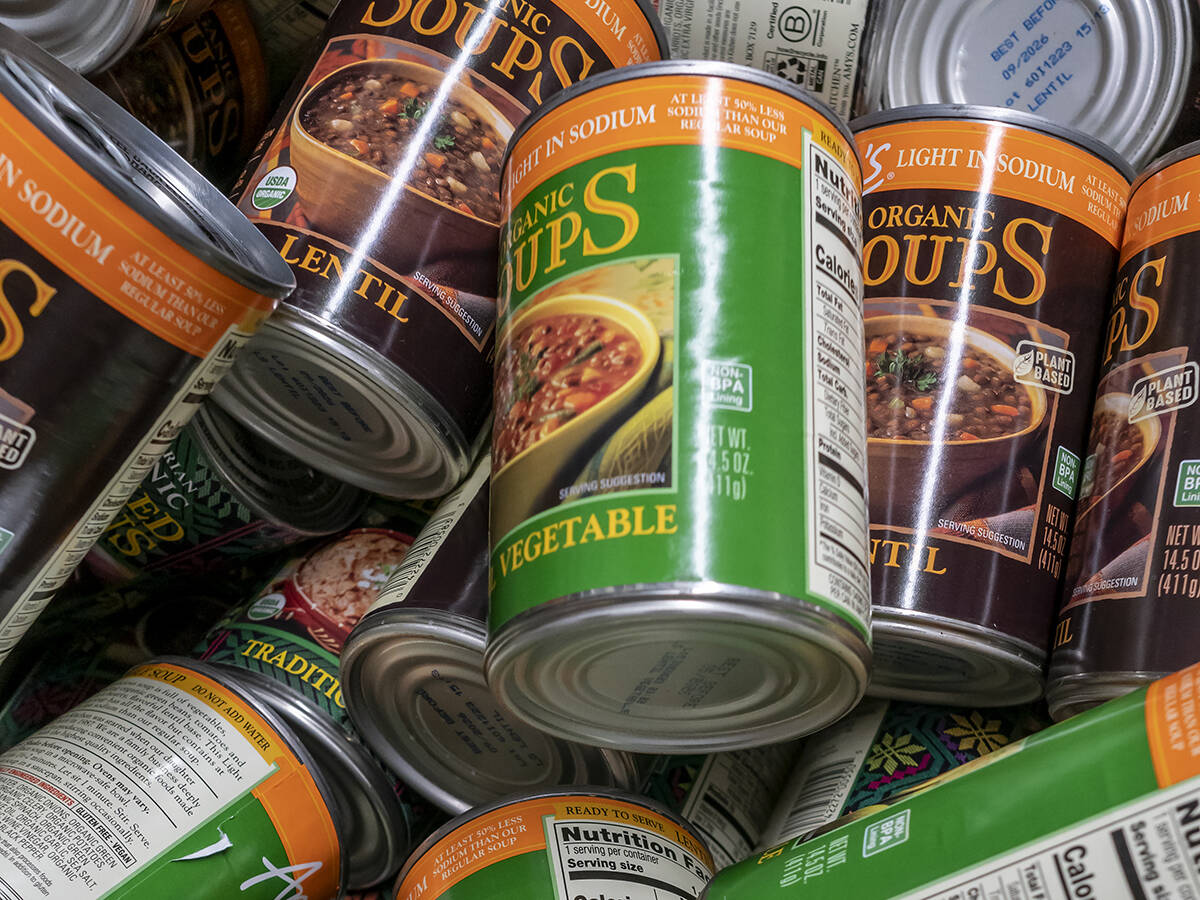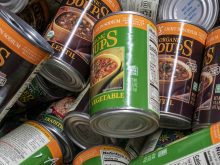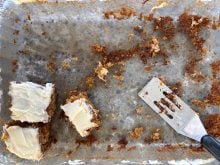What is the mystery about chocolate? Ever since I was little, I remember my maternal grandfather loving chocolates. Everyone teased him about his passion. I also remember my paternal grandparents each having chocolate stashed in a top drawer in their homes. I remember longing for a taste, but of course never asking. My Dad liked peppermint patties and chocolate macaroons, and my mother, like me, enjoyed chocolate in almost any form. It’s one of those wonderful, irresistible cravings.
Does everyone have chocolate cravings? What is it in chocolate that makes it so appealing? And is it good for us?
Read Also

Sustainable food has ‘lost all meaning’: prof
That marketing strategy is deader than a doornail, says a University of Guelph professor who specializes in consumer preferences and perceptions of agriculture and food.
Even though nutritionists, doctors and dermatologists will attest that chocolate does not produce “zits” in teenagers’ skin, it always did in mine, and still does, at the ripe old age of 47.
As I see it, chocolate adversely affects each of our children. Our oldest daughter is lactose-intolerant and milk chocolate is out of the question. Our second daughter loves chocolate as much as her mother, but can almost always guarantee a migraine will follow.
According to Headlines, Canada’s migraine newsletter, the foods you eat play a big part in triggering migraine attacks. Tyramine, found in chocolate, causes the release of serotonin, a chemical messenger that affects the dilation and constriction of blood vessels.
According to The Feingold Cookbook for Hyperactive Children and others with problems associated with food additives and salicylates by Dr. Ben and Helene Feingold, chocolate causes adverse reactions but perhaps less frequently than commonly thought.
Many times the reaction attributed to chocolate has actually been caused by synthetic chocolate flavoring. Because of the widespread use of synthetic chocolate, great care must be exercised in selecting products with chocolate. There are actually chocolate products marketed that never saw a cacao (chocolate) bean.
I remember when the kids were young, we avoided large doses of chocolate because we believed it made them hyperactive. Was it the chocolate or the sugar? At any rate, I remember looking for alternatives to put in the Christmas stockings, on Valentine’s Day and for the Easter bunny to bring. Chocolate contains a high concentration of energy-producing compounds and I remember when going for special dinners we preferred the kids not to be flying off the walls.
According to the dieticians of Dairy Farmers of Ontario, chocolate does fit into healthy eating and does not cause hyperactivity. Chocolate contains sugar, as well as cocoa, cocoa butter and seasonings to create the perfect taste. Many researchers have also found no link between sugar and hyperactivity. They suggest that “attention deficit hyperactivity disorder” occurs in a very small percentage of children, and that for most of them, excitement after consuming sweets is likely due to the social environment in which those types of foods are eaten.
In spite of my reservations, I continue to love chocolate. But too much, and I’m flying off the walls. Last night I made one of my favorite recipes, chocolate syrup. I had a chocolate sundae and couldn’t go to sleep. And when I did I had a nightmare, a rare occurrence.
Chocolate contains small amounts of theobromine and caffeine, having a mild stimulating effect. The darker the chocolate, the more caffeine. Two ounces of dark chocolate contain 40 to 50 milligrams of caffeine while two oz. of milk chocolate contain only three to 20 mg of caffeine, not much more than a cup of decaffeinated coffee.
Some children may be sensitive to small amounts of caffeine, but, for most, a little chocolate will have no effects. Chocolate milk contains practically no caffeine, has no more sugar than a glass of unsweetened orange juice, and contains calcium and vitamin D.
I recently read an article that questioned why we like chocolate. I have been very tempted to buy a book on chocolate, but instead will quote from my daughter’s little two inch by three inch book called Chocolate, the Exquisite Indulgence published by Running Press, London: “A craving for chocolate, as the nobles knew, is a lust for life.”
Chocolate is a food made from the seeds of a tropical tree called the cacao, that botanists believe originated in South America. The cacao bean played an important role in the legends, traditions and religions of the Aztecs. They believed that one of their prophets had brought the seeds from paradise and sown them in his garden. By eating the cacao fruit, the prophet acquired universal wisdom and knowledge. The Aztecs used the cacao beans as money, and also ground the beans to make a rich drink. In 1528, Hernando Cortes, the conqueror of Mexico, took some cacao beans to Spain. Eventually, chocolate’s popularity spread throughout Europe and all over the world.
A few weeks ago, I read a newspaper article about the euphoric qualities of chocolate. Back in 1951, Linda Henley, an America columnist wrote: “I can recommend switching to chocolate for all you addictive types …. Think of the advantages …. Chocolate doesn’t make you stupid and clumsy. It doesn’t render you incapable of operating heavy machinery …. You don’t have to smuggle chocolate across the border …. Possession, even possession with intent to sell, is perfectly legal … and second-hand chocolate doesn’t offend the people around you.”
When it comes to chocolate, I like to keep in mind the 80-20 rule. Eighty percent of the time, I try to eat a healthy, well-balanced diet, and 20 percent of the time, I treat myself to small amounts of chocolate. I often try to persuade others to share a decadent dessert with me. According to Canada’s Food Guide to Healthy Eating, “other foods” like chocolate can be eaten in moderation or on occasion.
Here is the chocolate syrup recipe I’ve used for almost 25 years. It is still on the cocoa can. We use it for chocolate sundaes, fondues and for dipping fruit (apples, banana chunks, strawberries, sliced peaches or pears).
Favorite chocolate syrup
Makes about 13Ú4 cups (425 mL)
11Ú4 cups white sugar 300 mL
3Ú4 cup cocoa 175 mL
1 cup water 250 mL
1 teaspoon vanilla 5 mL
Mix the white sugar and cocoa. Gradually stir in the water. Cook and stir over medium heat until mixture comes to a boil. Reduce heat and boil gently about four minutes; stir occasionally. Cool. Add vanilla. Cover and store in refrigerator. Keeps very well.
Looking forward to Easter
“The best part of Easter is eating your children’s candy while they are sleeping and trying to convince them the next morning that the chocolate rabbit came with one ear.” – Anna Quindlen (1955, American writer)
Easter is an exciting time for children. Most children, young and old, love chocolate treats. It’s an opportune time for activities, games and working and playing together. Involve the children in making the Easter eggs recipe below, and filling the Easter basket with homemade eggs. You could also wrap them up and have a treasure hunt.
Crunchy Easter eggs
Makes two dozen eggs.
2 cups semi-sweet 500mL
chocolate chips
1 cup crisp rice 250 mL
cereal
1 cup bran flakes 250 mL
1 cup shredded 250 mL
coconut
Melt the chocolate chips in a pan over low heat or melt in microwave at medium heat. Mix in cereal and coconut. Roll into egg-shaped balls and place onto waxed paper. I also use the wax paper to help shape the balls, since they are quite sticky to work with.
Leave at room temperature until the eggs harden.
Source: Nutrition Communications Dairy Farmers of Ontario (adapted from Jean Pare’s Company’s Coming – Cookies.)
The above Easter eggs are chocolaty, crispy and crunchy. You might also use an Unbaked Chocolate Macaroon recipe (another of my mother’s old favorites) to make Easter eggs a bit chewier.
Unbaked macaroons
1Ú2 cup margarine 125 mL
1Ú2 cup milk 125 mL
11Ú2 cups white sugar 375 mL
Let come to a boil, and add:
5 tablespoons cocoa 75 mL
stirring vigorously
3 cups rolled oats 750 mL
1 cup coconut 250 mL
1 teaspoon vanilla 5 mL
1Ú4 teaspoon salt 1 mL
optional: walnuts or cherries
Cook for two minutes. Drop from spoon onto cookie sheet and form into egg shape.
A sandwich spread
J.D., Spirit River, Alta., requested a sandwich spread recipe like the bottled sandwich spread. I think this one is similar to the original. If I remember correctly what it was like, you may want to add red pepper or pimento.
Cream pepper spread
4 ounces cream 125 mL
cheese
1Ú4 cup butter or 50 mL
margarine
2 tablespoons chili 30 mL
sauce or ketchup
2 tablespoons 30 mL
chopped green pepper
2 tablespoons 30 mL
mayonnaise
Mix all together. Makes about one cup (250 mL).
Source: Jean Pare’s Company’s Coming – Soups and Sandwiches.

















